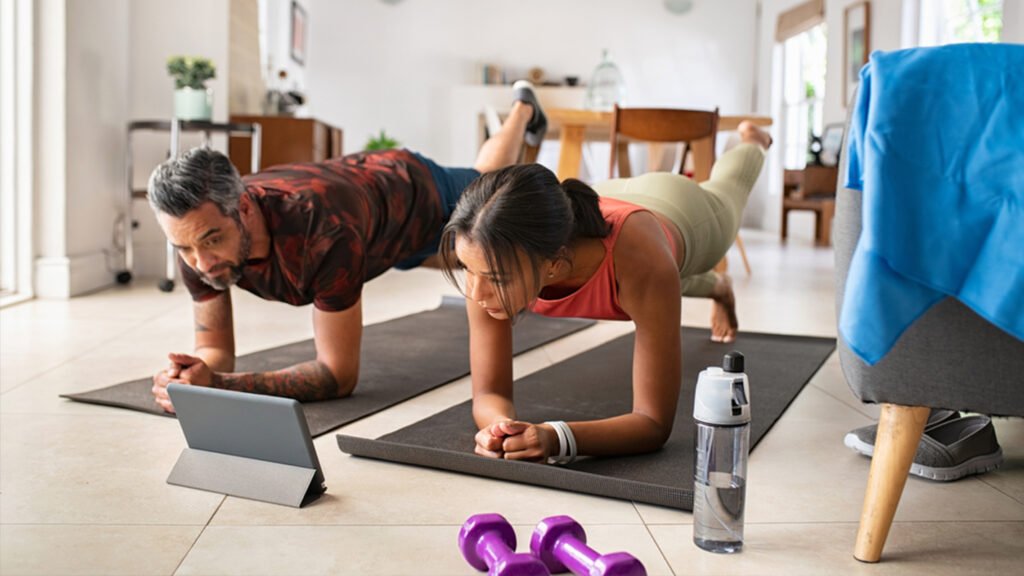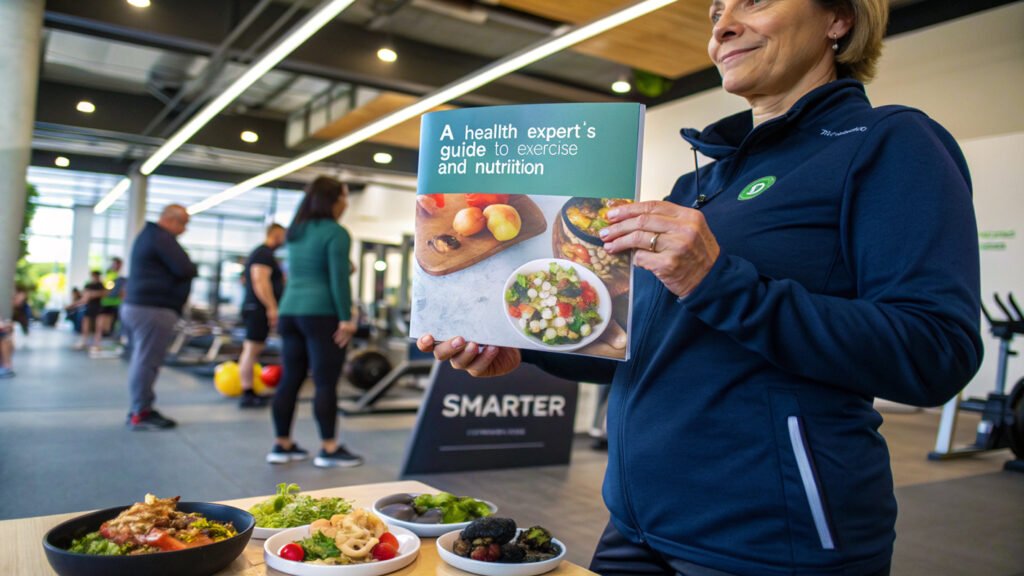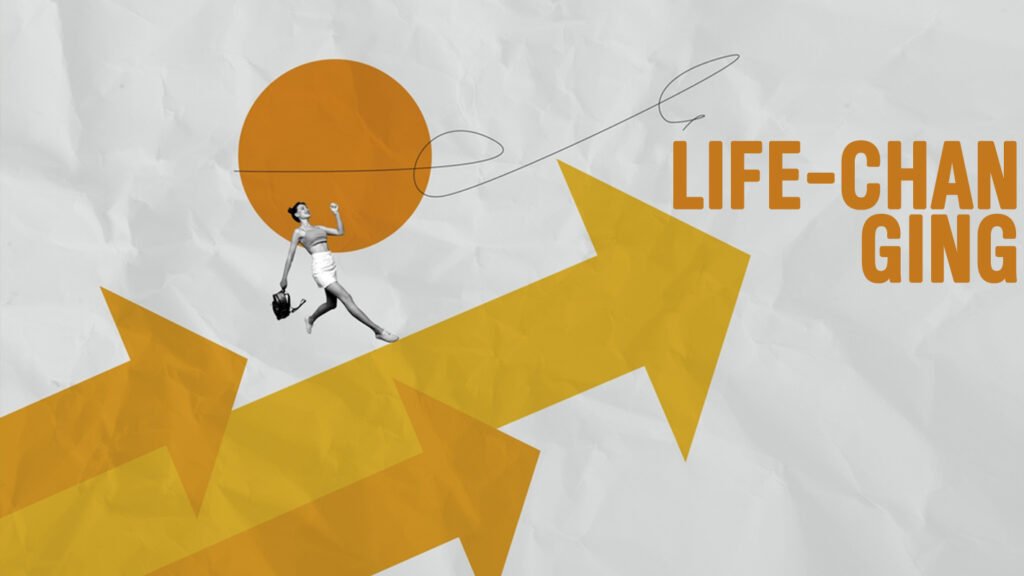Yoga For Complete Beginners: Start Your Journey of Balance and Flexibility – Easy Steps!
Do you want to partake in yoga, but don’t know where to start? Nowadays, yoga becomes one of the most rewarding practice for people of all background, which also provide more benefits than just simply flexible and fit. Yoga For Complete Beginners could be your perfect starting point if you are looking into stress relief, to increase mental clarity or simply to lead a healthier lifetime.
Table of Contents
Toggle
this guide is Yoga For Complete Beginners, simplifying the essentials of yoga in an approachable, easy to follow, and free of intimidation format. Your host will teach you from foundation poses all the way through breath techniques and tips for developing a routine that fits into the life you have, no matter how flexible you are or how much experience you have.
Are you ready to get on your mat and get to know how yoga can be a potent wellness resource? Let’s get started, focusing on what truly matters: to keep finding your inner balance and make sure it comes easy, as they say, at your pace and at your comfort.
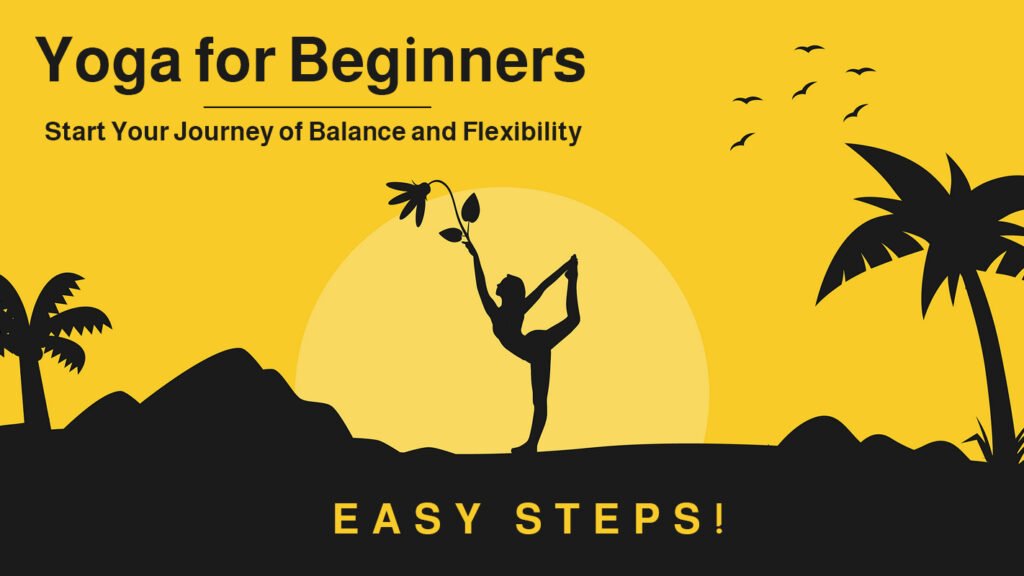
Yoga For Complete Beginners – The Basics
Especially Regarding starting yoga, there are so many poses, terms, and types of yoga to choose from that, it can get a little overwhelming.
However, the truth of the matter is that yoga is an incredibly flexible practice, and will welcome you at any level. To give you a rundown of some of the foundation/ foundational terms that you can get a web brush up on that would help you feel a bit more confident and comfortable as you plunge into a new journey, let’s.
What is Yoga?
Yoga isn’t just stretching, and holding poses, yoga goes above and beyond that; it’s balancing the body, the mind, and even the breath. Yoga is an ancient Indian physical science that includes practices such as meditation, physical exercise and ritual, breath control, and self through the Yoga aura technique in conjunction with the body.
In addition to improving flexibility, yoga centers on breathing and movement and is an incredible stress reliever and anxiety reliever.
Understanding the Right Types of Yoga For Complete Beginners
With so many options to pick from, it entirely depends upon what you want your yoga to be. Here are a few beginner-friendly styles to consider:
Hatha Yoga: Easy to learn, gentle movements, simple poses.
Vinyasa Yoga: More flow, more breath, with movement, not too complicated at quieter times linking breath to movement, great if you like flow and variety.
Yin Yoga: A style of holding poses for longer periods, slow, meditative relaxation, and flexibility.
Restorative Yoga: Great props that support each pose, and promote deep relaxation.
As you know, there is a very large variety between each style so don’t be afraid to try some out until you find what really speaks to you.

Yoga For Complete Beginners Poses Essential
Once you start out, knowing a few fundamental poses to get you going will provide a strong foundation. Here are five beginner poses to practice at your own pace:
Mountain Pose (Tadasana): One of the simplest standing poses to improve postural alignment and balance.
Downward-Facing Dog (Adho Mukha Svanasana): Stretches the hamstrings and spine through a gentle inversion.
Warrior I (Virabhadrasana I): Extends focus; builds strength in the legs and core.
Child’s Pose (Balasana): A back and shoulder relaxing pose.
Cat-Cow Stretch (Marjaryasana-Bitilasana): It’s a great warm-up stretch for the spine to help loosen things up.
Don’t worry about ‘getting it right’ with the perfect pose, yoga is about motion, not stagnation.
Breathwork: The Foundation of Yoga
Mindful breathing is key to becoming a good Yogi and is called ‘Pranayama.’ Practicing helps you learn to breathe deeply and rhythmically, this helps with focus, promotes relaxation, and enables each movement. Start with these simple breathing techniques:
Ujjayi Breath (Ocean Breath): A steady audible breath to help quieten the mind.
Diaphragmatic Breathing: It’s especially grounding for beginners because it encourages deep breathing from the belly.
Yoga breathing techniques help you stay focused, making each yoga session better and more fun.
Yoga For Complete Beginners: How to Make Your Own Practice at Home
You don’t need a fancy studio to build a consistent practice. Here are some tips for starting your yoga journey right from the comfort of your home:
Set a Dedicated Space: Look for a quiet corner, somewhere you won’t be bothered by anyone.
Choose a Time that Works for You: Energization in the mornings and relaxation in the evenings are the best times to do these.
Use Online Classes or Apps: There are lots of apps that provide beginner sessions with safe poses guidance.
Stay Consistent but Flexible: You should try to do 10 to 15 minutes a few times a week and slowly work up from there.
Home hatha yoga gives you the opportunity to set your own pace and to get comfortable while focusing on your personal wellness.
Yoga isn’t just about touching your toes, it’s a journey where you begin your startup with the basics. Trust your body, celebrate your steps — and include the process. In the next section, we’ll look at some tips for setting goals and motivation to keep doing yoga.

Tips for Staying Motivated and Setting Realistic Yoga Goals
as for trying to reach our goals for practicing yoga, motivation can often be lacking. Hence, planning out our realistic goals for reaching those can help us achieve them.
One thing, as suggested, is starting a yoga practice, but another thing is how to maintain it. Staying motivated in this day and age is an intentional, structured, and sometimes even kind to self process. In this section, I’ll help you explore proven methods to keep yourself on your yoga path, set achievable intentions, and cheer every step along the way.
Define Your Why: Understanding Your Motivation
Before diving deep into yoga, ask yourself: What am I looking to get out of doing this? Deciding your “why” gives you something to push yourself toward reaching complete progress. Here are a few examples of goals you might consider:
It will increase mobility and flexibility.
Reduce stress and anxiety
It increases mental concentration and mindfulness.
Build strength and resilience
With this, you know what you want to focus on, no matter how low your motivation is.
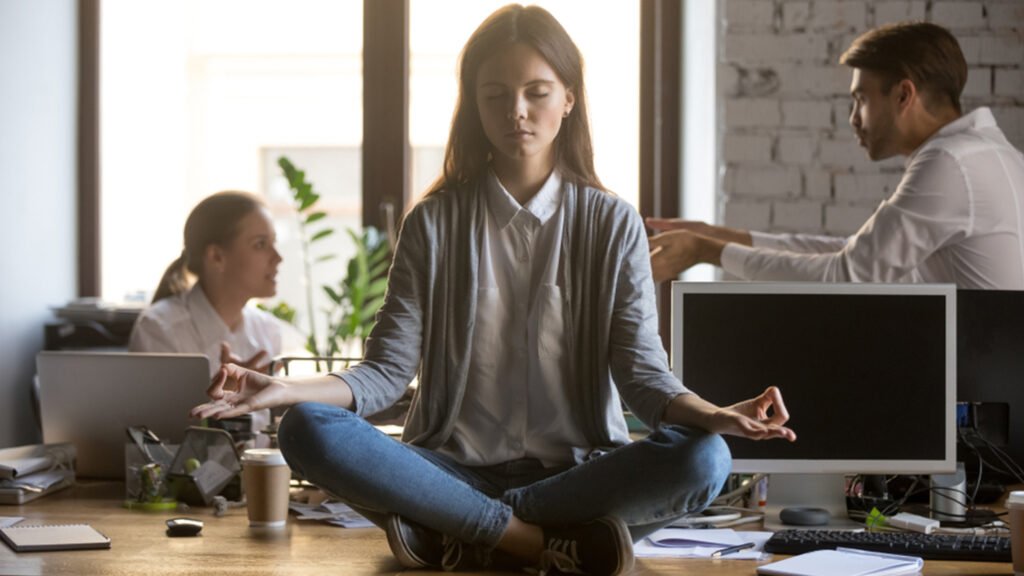
Begin Small and Set Actualistic Goals
Just like any other beginner, making overly ambitious goals is one of the biggest mistakes beginners make which at the end leads to burnout. Instead, try focusing on creating smaller, manageable, relatively attainable, albeit short-term goals, to develop the confidence and consistency to succeed. Here are some examples:
Practice 10 minutes daily: For instance, new exercises tend to better stick for short sessions.
Learn one new pose each week: It is fresh and keeps you feeling done while also feeling accomplished.
Commit to one yoga class per week: This can give you structure no matter if it’s online or onsite.
When you get started, small wins will build momentum without swamping you, and help you stay on track with a regular routine.
You will also Track Your Progress and Celebrate Wins.
Yoga For Complete Beginners, As you track your progress you can see how far you’ve come which is incredibly motivating. Write everything down in a simple journal or app — your experiences, new poses you’ve learned, or… how you feel after the session. Here are some ways to track progress:
Journaling: Take note when flexibility, balance, or mindset changes.
Photos: Take pictures of your poses and see what physical improvements you have over time.
Weekly Reflection: Every Friday write a few thoughts on what you did well and places to improve for the coming week.
Take time to celebrate each bit of progress – staying in a position for longer and witnessing increased focus – it’s all positive motivation to keep pushing forward.
Yoga For Complete Beginners: Find a Supportive Community
Yoga alone does not always feel so isolating, but the connection with others makes practicing easier achievable, and feeling accountable. Online forums, local studios, or social media groups are the places to find others to exchange tips, ask questions, and cheer each other on during our journey.
Join an Online Yoga Community: There are many communities on many websites and apps to help you get in contact with other beginners.
Follow Yoga Influencers or Teachers on Social Media: Usually, they’re posting motivational content, tips, or beginner-friendly routines.
Attend Group Classes or Workshops: Being surrounded by others can increase your energy and commitment.
A community that loves and supports you is capable of giving you someone to lean on and celebrate with making the journey far less intimidating and a lot more fun for Yoga For Complete Beginners.
Yoga For Complete Beginners: Go With the Flexibility in Your Routine
Unpredictable life can happen, and it might be really hard to do yoga every day. Don’t be defeated: take advantage of flexibility in your practice. Allow yourself to modify your routine as needed:
If you’re pressed for time, go for a 5- or 10-minute break first, and don’t skip altogether!
If you’re tired, adjust your practice to fit your energy level, and go with a restorative class or if you’re energized, take a more vigorous flow.
Don’t feel bad if you missed a day. Yoga is a practice for life, you’ll have ups and downs.
By being this adaptable, they avoid burnout, and it also solidifies a nice, positive, sustainable relationship with yoga.
Using these motivational strategies could change your yoga experience from a bunch of chores to a part of your routine. The goal of yoga is not perfection, but certainly progress. The more you exercise, the more you learn about your strength, tenacity, and ability to grow.
(You don’t stop, you are building something beautiful!)
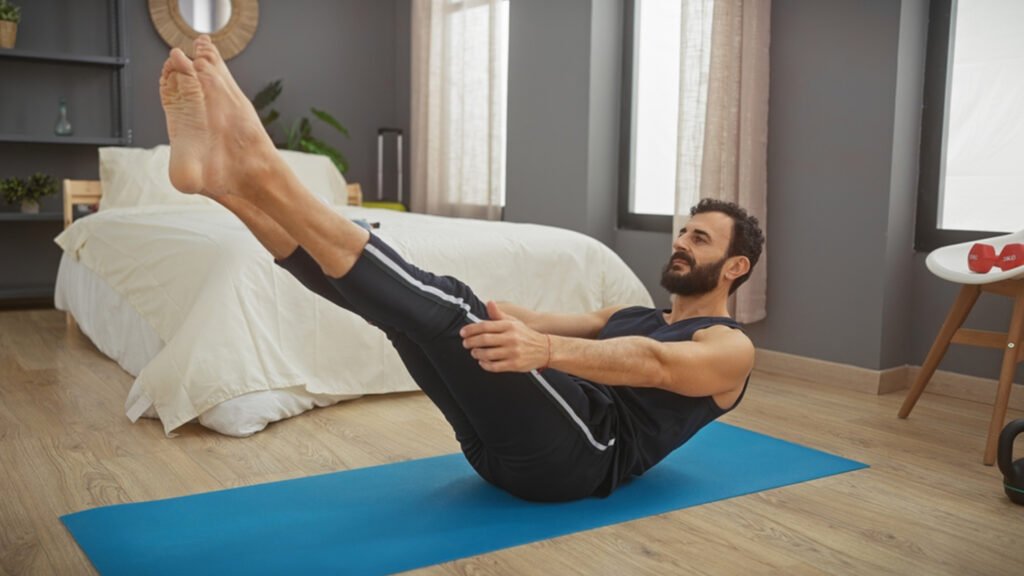
The Common Yoga For Complete Beginners Poses and Its Benefits
You don’t have to be flexible or be advanced in yoga practice to want to start practicing; just be open to trying it and learning! This section covers some basic yoga poses that are great for beginners and provide the physical and mental benefits to help build a strong base. Regardless you’re looking to relieve stress, work on your flexibility, or build some core strength, these poses are doable, effective, and easily accessible in a small space at home!
Mountain Pose (Tadasana)
It may look simple, but this standing posture is at the base of it all. Mountain Pose will promote focus and help to align your body as well as your posture.
How to Do It: Keep your feet together, and weight evenly distributed on both feet, and your arms resting by your sides. Bring your thighs in and lengthen through your spine while lifting from the crown of your head.
Benefits: It strengthens legs, improves posture, and encourages full deep breathing.
Often, Mountain Pose is the starting point for many standing poses as it warms up your body, allows you to connect in with your breath, and establish balance.
Adho Mukha Svanasana (Downward Facing Dog)
One of the most classic yoga poses is probably Downward Dog which stretches the whole body, particularly the shoulders, hamstrings, and calves. Often included in sun salutations, and even used as a resting pose in many yoga sequence sequences.
How to Do It: Get into a “V” shape, on all fours, tuck your toes, and lift the hips up toward the ceiling. Position your feet and hands shoulder-width apart, and hips-width apart.
Benefits: Improves flexibility in the spine, arms, and shoulders, as well as the calves and hamstrings.
It is a very helpful pose to get rid of tension in the back and if you sit at your desk for many hours it is very refreshing.
Warrior I (Virabhadrasana I)
Standing Warrior I creates strength in the legs, opens the hips, and stretches the chest and shoulders.
How to Do It: Start in Mountain Pose, take a step back, and keep the back leg straight, bend the front knee. Keep your arms shoulder-width apart, and put them overhead.
Benefits: It strengthens legs and core, keeps you focused and it opens the chest.
Aside from strengthening the physical part of yourself, Warrior I helps you develop courage and inner power — so it’s great for building self confidence on and off the mat.
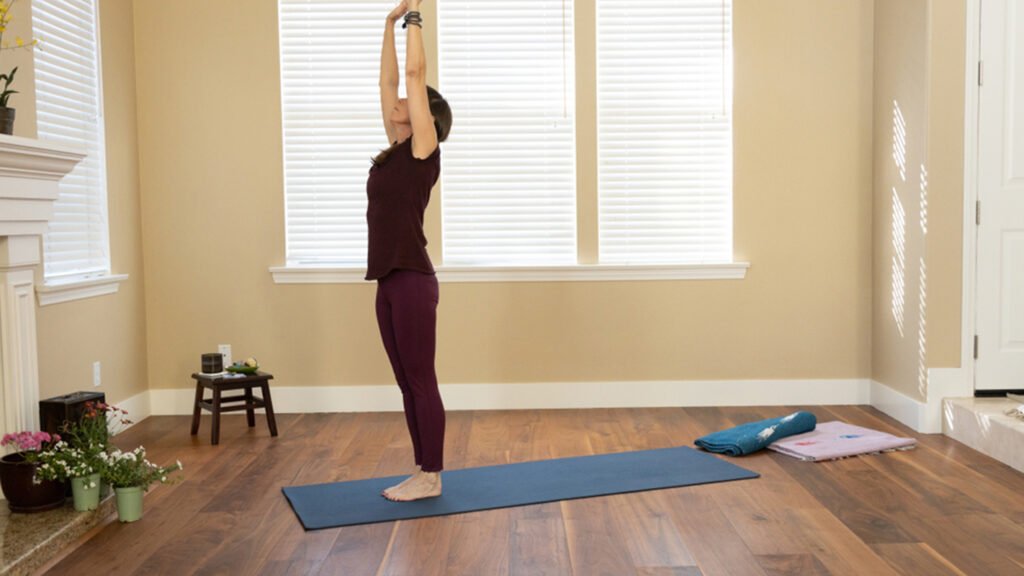
Child’s Pose (Balasana)
Child’s Pose, though a gentle, restful stance used sometimes as a break from more active postures, cannot be held for more than five minutes, due to the position of the trunk. Practicing this pose will quiet the mind and loosen tension in the back and neck.
How to Do It: Fold your torso over your thighs and kneel on the mat with your arms spread wide but on the mat, so you’re on your heels and sit back almost all the way to the backs of your thighs. Put your hand on the mat, and rest your forehead on it.
Benefits: It relieves the spine, stretching the hips slightly and settling the nervous system.
Child’s Pose is a way to ‘reset’ when needed – during your practice or any way you would like to use it.
Tree Pose (Vrksasana)
Tree Pose keeps us balanced and strengthens the legs and core. Building physical AND mental focus is a great way to do it.
How to Do It: Place the sole of the other foot atop your inner thigh (or to whatever level is necessary), stand tall, and shift your weight to that other foot. You can bring your hands to your heart or extend your hands outwards.
Benefits: Increases balance, strengthens legs and ankles, and increases focus.
This can be a great fun challenge and is great for building stability and focus, over time.
Paschimottanasana (Seated Foreign Bend)
Seated Forward Bend offers a great stretch to the back of the body, bringing more flexibility to the hamstring and lower back, while also promoting relaxation.
How to Do It: Sit with your legs outstretched in front of you, then reach down to your feet and fold forward keeping your spine long.
Benefits: It stretches the hamstrings and lower back, calms the mind, and relieves stress.
Seat Forward bend prompts us to surrender so it is a quiet ending to any yoga session.
Yoga For Complete Beginners poses will help you build a solid foundation to build from – gradually and feeling the rewards of the mental and physical benefits of yoga. In this case, consistency wins out so even a few minutes a day is enough to see improvements in flexibility, strength, or relaxation. And as you warm into these poses, you’ll be ready to dive a little deeper into more of the yoga stretch.
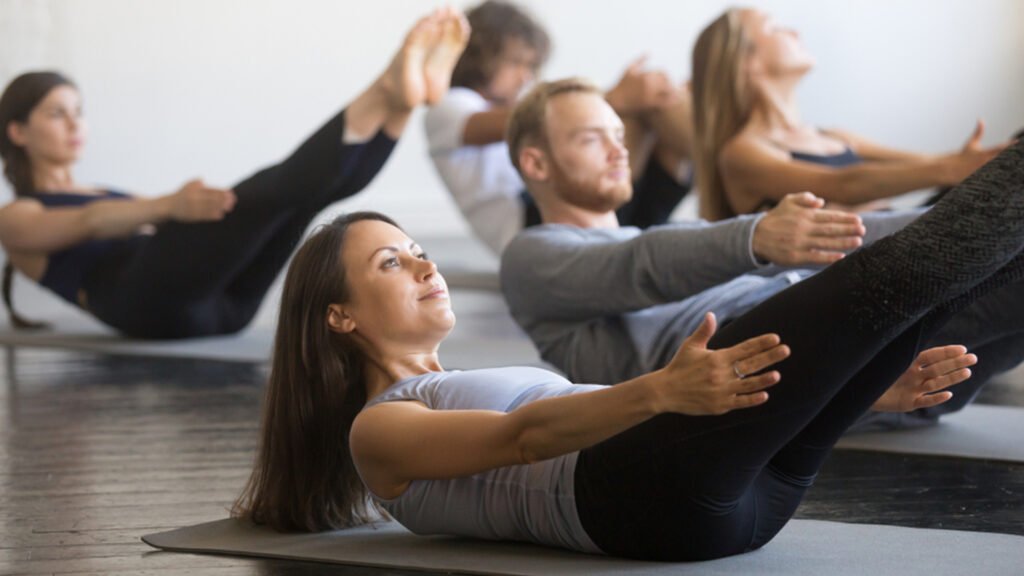
Tips for Building a Well-Consistent Yoga Practice
One thing is striking up a class of yoga; another is turning up. Building a consistent routine can be difficult, especially if you’re new to yoga or even if you’ve practiced sporadically.
These are some practical, motivational tips to incite you to make yoga a consistent, rewarding part of your lifestyle.
Work Tangibly and Work With Realistic Goals
When starting yoga it can be tempting to dive in with all the lofty goals, but to make it sustainable, starting small is key. If you’re just starting out, set specific expectations, such as practicing two to three times a week. When you are comfortable, you will add in more practice time over time.
Example Goals: Daily try a 10-minute session, or a 30-minute practice three times a week.
Why It Works: Break it down into small, achievable goals that will keep you motivated and help you avoid burnout so you form the habit.
Perfection is related to consistency, not perfection. Each day is progress and every little bit will count.
Separate Work from Recreation
The more specific the spot for yoga is, the more likely you’ll practice regularly. You don’t need to have access to a full studio all of the time, you just need a corner with a mat, alongside a candle or two and some calm decorations.
Essentials: Yoga blocks, a good quality mat, and a bolster for support.
Tip: You can add things like a plant, essential oils, or a small statue that inspires you.
By making a peaceful and inviting space you make that space associate relaxation and movement, in other instances, easier to fall in the zone.
Use Resources to Stay Engaged
You can practice at home but it’s hard to know what to do next. There are also lots of handy online resources, such as beginner-friendly yoga videos on YouTube or mobile apps.
Recommended Resources: If you go online don’t forget to look for online classes on sites like YouTube or a yoga app that has structured plans.
Variety Matters: Change things up with different styles of yoga, for example, a gentle Hatha or calm Yin because a mix of things keeps it interesting and fresh.
Guided sessions help you to feel supported, especially in the early days — and that plays a huge role in your motivation.
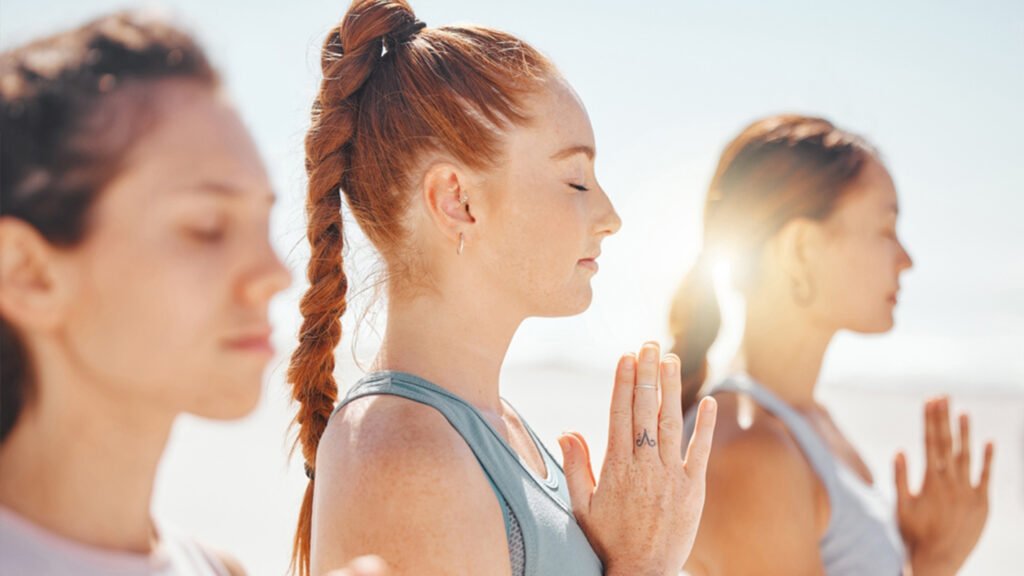
Include it in Your Routine
Without any changes to your current schedule, adding yoga to your routine will be the easiest way to make yoga a habit. Pick a specific time: in the morning to kickstart your day, or in the evening before you switch off, and it can make a big difference.
Morning Practice: It energizes and puts a positive tone on the day.
Evening Practice: Perfect for easing tension and relaxing for snoozing sleep.
For example, if you’re someone who likes to do something every weekday after work, and you’re trying to (force your) children to study, find a period that makes sense in your time and then make it non-negotiable. But as you do with your teeth or breakfast, make yoga part of your daily routine.
Manage your own Fitness Journey and Celebrate the Milestones.
Keeping track of your practice keeps you on track and reminds you about what progress looks like. All small changes matter in regard to flexibility, balance, or strength.
How to Track: Record your sessions and your progress either in a yoga journal or with a mobile app.
Celebrate Wins: Every milestone matters! touching your toes, the ability to hold a challenging pose, or simply feeling more at ease with yourself, give yourself credit.
But, as cliche as that may sound, it keeps you in touch with the commitment you’re making and keeps you in touch with the good changes yoga brings to your life.
Finding consistency and motivation in Yoga can be tough, but with some SET small goals, a dedicated yoga space, yoga resources, building existing in the routine, and celebrating each success you’ll see it comes easier.
A regular Yoga For Complete Beginners practice isn’t just good for flexibility and strength; it also improves mental clarity, relaxes the body, and gives a sense of well-being to daily life. Same as with any habit, you need to begin (and continue) living one breath at a time.
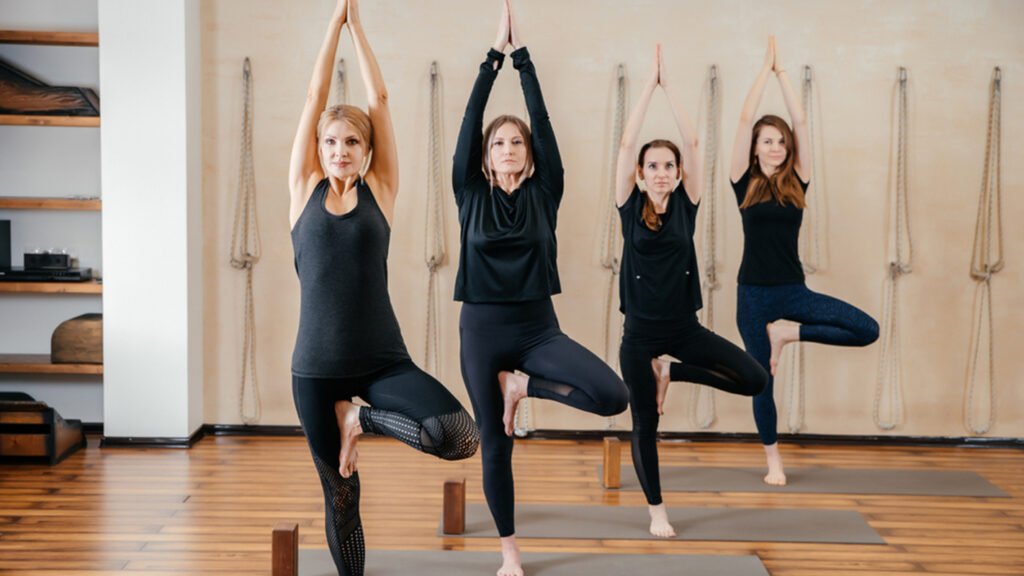
Yoga For Complete Beginners Should be Catching Mistakes to be Avoided When You Start Yoga
Yoga For Complete Beginners Starts Out Exciting, But Common Mistakes Beginners Make That Can Hinder Progress or Frustrate You.
The Excitement is good, but wearing something on your noggin is fairly easy to do and many of these clues can prevent you from having a safer, more effective practice. Therefore, here’s what you need to avoid to make your yoga experience great.
Skipping the Warm-Up
If you are a beginner and you skip the warm-up, this is one of the biggest mistakes you make. No, Yoga isn’t all about stretching, it’s about body preparedness for coming movements. During a proper warm up your muscles warm up, you become more flexible, and you reduce your risk of injury.
Why It’s Important: Starting cold can really put a strain on the muscles and joints, so the poses can feel uncomfortable and lead to potentially harming yourself.
Tip: I always start my practice with gentle movements, like Cat Cow stretches or Sun Salutations that activate the body and get the blood flowing.
There is never a rush into the more intense poses, a few minutes spent warming up can simply make the difference in your practice.
Forcing Your Body into Poses
Getting a perfect posture won’t be achieved on your very first try in the case of yoga. Unfortunately, many beginners tend to take themselves harder when they think they are supposed to look like the advanced practitioners that they see online or in class. The secret, it’s listening to your body, following it, and not obeying your body.
Why It’s Harmful: It can cause muscle, ligament, and joint strain and possible injury, and also can be frustrating to force yourself into a position.
Tip: Prop your body with blocks and straps, but do not push yourself into a challenging yet strange pose. It takes time, not overnight, for flexibility and strength to develop.
Let’s be kind to our bodies and be patient with the practice. Winning may be harder to come by, but it will stick and be injury free.
Comparing Yourself to Others
When you’re in a yoga class with others or watching yoga videos online, it’s easy to jump into the comparison trap. However different people’s bodies are and each yoga journey they take. Do not feel the pressure of having to ‘keep up’ with others, or need to be as good as them.
Why It’s Counterproductive: When you compare yourself to anyone and everything, you give up the very thing you’re seeking: a happy, simple pratyahara.
Tip: Instead, check in with your own breath, body, and your progress. The only person you have to compete with is you in yoga.
Comparison is part of our humanity, but to practice uniquely with your own body is to also let go of comparison. Stop comparing yourself to others for more joy and growth.
Holding Your Breath
Yoga is essentially based on breathing, but most beginners forget about that. When you hold your breath or do shallow breathing, you get into tension and cannot enjoy each pose thoroughly.
Why It’s Disruptive: With proper breathing, you remain grounded, focused, and relaxed. It also helps to move energy through the body and to deepen stretches.
Tip: When inhaling through the nose, lengthen or expand in a pose, and when exhaling to fully release the tension. Be breath-aware.
You should flow with breath and movement together naturally so that your breath leads in the practice, not the other way around.
Neglecting Alignment
You want good alignment in every yoga pose to maximize your benefits and avoid injuries. Often, they are beginners, and they forget that body alignment in postures is important.
Why It Matters: Proper alignment keeps your joints, muscles, and bones working, and keeps you working the areas in your body you are intended to work.
Tip: In each pose focus on the alignment of your feet, knees, hips, shoulders and your head. But often a yoga teacher or video will help you fine-tune your alignment.
When you do the postures at home in the mirror [or] mirror yourself with props pay attention to how your body is feeling in each posture.
Being Too Hard on Yourself
Yoga itself is a journey, not a destination. If you’re not seeing results immediately, or are having trouble getting into specific poses, many beginners make the mistake of being too critical of themselves. What is beautiful about yoga is how it is the process and how you come to become aware of yourself.
Why It’s Unproductive: Yoga does not always bring us joy nor does it advance with the tiniest improvements, which can be destroyed by self-criticism.
Tip: Be kind to yourself. Pat yourself on the back at small wins: holding a pose for 1 extra breath, getting more flexible.
Built on the belief that yoga is about more than physical benefits—yoga is also a practice of cultivating mindfulness, lowering stress, and increasing connection to body and mind.
With these mistakes avoided, you’ll be able to start doing yoga with less effort, the higher safety and enjoy much more. With yoga it’s not about perfection, it’s about progress. If you apply some patience, awareness, and consistency you will be on a path to fuller flexibility, strength, and mindfulness.
Being Too Hard on Yourself
Yoga itself is a journey, not a destination. If you’re not seeing results immediately, or are having trouble getting into specific poses, many beginners make the mistake of being too critical of themselves. What is beautiful about yoga is how it is the process and how you come to become aware of yourself.
Why It’s Unproductive: Yoga does not always bring us joy nor does it advance with the tiniest improvements, which can be destroyed by self-criticism.
Tip: Be kind to yourself. Pat yourself on the back at small wins: holding a pose for 1 extra breath, getting more flexible.
Built on the belief that yoga is about more than physical benefits—yoga is also a practice of cultivating mindfulness, lowering stress, and increasing connection to body and mind.
With these mistakes avoided, you’ll be able to start doing yoga with less effort, the higher safety and enjoy much more. With yoga it’s not about perfection, it’s about progress. If you apply some patience, awareness, and consistency you will be on a path to fuller flexibility, strength, and mindfulness.
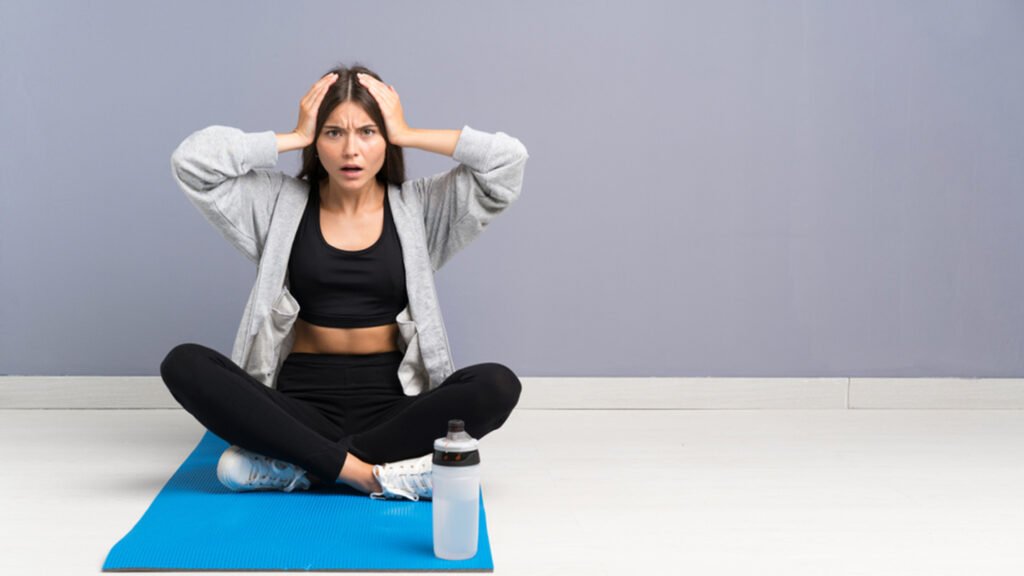
Conclusion: take over Your Yoga Journey
Having seen, starting yoga as a complete beginner can be very exciting and challenging. Once you know how to approach it, you will find that yoga is not about mastering the poses but bringing your body and mind closer. Be it for increasing your flexibility, improving your posture, or just finding one way of reducing stress, yoga has something to offer to everybody.
So, practice being consistent and not necessarily perfect. Definitely avoid comparing yourself with others. The beauty of yoga is in the journey and not in attaining that pose. So, take it slow, listen to your body, and let the process be enjoyable. As you go along, you will see it translate off the mat, bringing balance and mindfulness into everyday life.
If you’ve reached this point, you are already off to a great start. A few simple poses to start with and build your confidence will set you up for success. What seemed overwhelming in the beginning will continue as smoothly, and yoga for complete beginners will be a part of your routine quite naturally and enrichingly.
So, are you ready to unroll your yoga mat and begin? it’s within the convenience of your own home or out in a class, remember that every step, no matter how small, taken is one step closer toward a healthier and more balanced you. All that is needed is to adopt the practice, be patient with oneself, and most importantly, enjoy each moment of this journey. Yoga is anything but a simple physical practice; in truth, it’s a path toward a more aware and centered life.
Ready to deepen your practice of yoga? Begin now, and let your journey be nothing short of life-changing!






